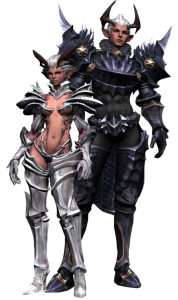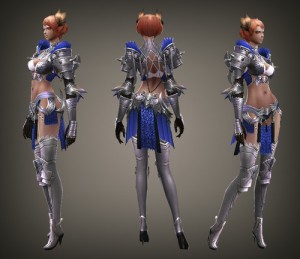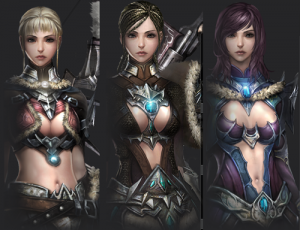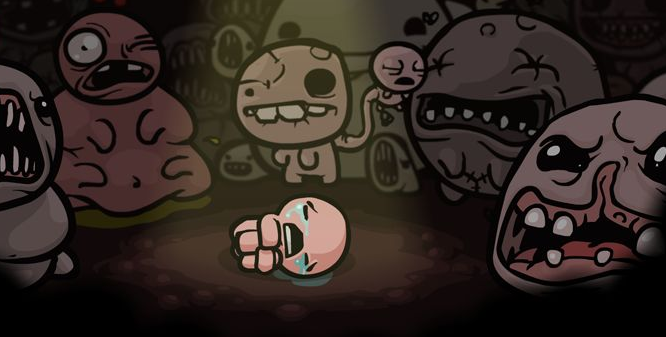It’s no secret that I’m quite the peruser of the fandom-friendly social media site Tumblr. It not only creates an open environment for fandom flailing but also acts as a medium for average users to call out the various issues and controversies that occur in said fandoms and mainstream society alike. Though there are users who disagree, I believe its ingenuity lies in its ability to let fans combine critique and appreciation in an often intelligent and productive way. One such Tumblr account that I have recently come across that really harnesses the medium is “Repair Her Armor,” a page dedicated to pointing out the ridiculousness of (and atrocities regarding) costume design of women characters in games and comics. According to their main page, Repair Her Armor is a blog “dedicated to show and change the looks of ridiculous female armors (and other outfits) that women tend to have in media; such as games and comics. The purpose is to show that over-sexualized women is not ‘empowering’, but clearly offensive and ridiculous – not to mention it’s also clearly out of context.” Furthermore, they encourage followers to take existing designs and improve upon them, using digital manipulation to make them more protective, realistic, practical and attractive to female players. Inspired by their campaign, I thought I’d discuss my take on why the outfits women characters are often clothed in are ridiculous, objectifying, and demeaning and what can be done about it.
It’s pretty evident just by looking at these costumes that they make little to no physical and logistic sense, particularly given the combat environment the characters are placed in and in comparison to the battle-ready outfits their male counterparts don. Generally, and particularly so in fighting-based series and MMORPGs, the female characters are just as much “in the action” as their male counterparts. That means sword fighting, acrobatics, and martial arts. It’s hard to realistically imagine running around and fighting in what is sometimes the equivalent of little more than lingerie. It’s certainly not protective, secure, or even comfortable. The exposed and bare areas on female characters that are found in so many of these designs also generally tend to be some of the most vulnerable places on the body and the worst to be hit. Logistically, they would want to be covered up in battle, or at least defended in some way. But it’s clear that these make no such attempt and would be next to useless (even hindering) in real-life combat.
 It might be easy to insist that these costumes are excusable because it’s “just a game,” or that it’s all part of the fantasy of the universe. However, it’s important to look at what the male characters of the same series are wearing to see that there is a disproportionate gap in the level of protection between the male and female characters. The men generally are clad in almost excessive amounts of armor, to the point where they are often grandiose or ornate. While the female version may also be ornate, it is in a counterproductive way, acting as mere flash without any substance. If designers recognize the necessity of and are able to create such outfits for the male characters for combat, there is no reason for the absence of such design logic in the design of the women’s choices. It simply manifests as a look that rests solely upon sexuality, especially as what armor they may have seems to be an add-on rather than the more “earned” looking armor of the male characters.
It might be easy to insist that these costumes are excusable because it’s “just a game,” or that it’s all part of the fantasy of the universe. However, it’s important to look at what the male characters of the same series are wearing to see that there is a disproportionate gap in the level of protection between the male and female characters. The men generally are clad in almost excessive amounts of armor, to the point where they are often grandiose or ornate. While the female version may also be ornate, it is in a counterproductive way, acting as mere flash without any substance. If designers recognize the necessity of and are able to create such outfits for the male characters for combat, there is no reason for the absence of such design logic in the design of the women’s choices. It simply manifests as a look that rests solely upon sexuality, especially as what armor they may have seems to be an add-on rather than the more “earned” looking armor of the male characters.
I believe the fault of this rests on the objectification of women characters that seems to be an unfortunate default in games which relates to the concept of the male gaze and the frequent role of women as the object of desire discussed within film theory. Laura Mulvey introduces the role women play in film media as scopophilic, objectified others that draw the pleasure of sight in her article entitled “Visual Pleasure and Narrative Cinema.” Arguing that movies and games are comparable medias in this regard, Mulvey’s statement that such women fulfill “traditional exhibitionist roles (in which) women are simultaneously looked at and displayed, with their appearance coded for strong visual and erotic impact so that they can be said to connote ‘to-be-looked-at-ness’” is definitely applicable here, as women characters are coded and designed in games to be appealing to a male audience. This molds the women as solely sexual objects and objectifies any role they may play in the game, a role that may even be negatively projected on the real woman or girl behind/playing that character.
Furthermore, the inclusion of and seeming reliance on these outfits create a gaming environment that suggests to female gamers that they don’t belong and that their presence really is only in relation to the gaze of the male players, particularly in community-based games. Placing the influence of unrealistic body images aside, as that’s an even more complex issue, such sexualized outfits designate us as a sort of “Other,” a glaring opposite compared to the male avatars or characters. These outfits can sometimes be our only option too, forcing us, if we want to play a character of our own gender, to conform to that role which is not equal to that of the male players. It is not “empowering” to have this be our only option and to resign female characters to just the roles of sexualized objects rather than equal partners or warriors on the playing field.
Now, not every female character is designed like this and just because they’re dressed this way doesn’t necessarily make them bad characters (I personally love quite a few characters guilty of this myself). It’s possible to be critical of a series but still enjoy it, and it’s possible for the same series to have mixed results regarding costuming. Furthermore, I’m not asking that they do away with any “sexy” costumes. There are plenty of costumes on characters that are attractive and sexy but not objectifying or ridiculous. But I believe that a step could be taken to create female equality in gaming if more women characters were dressed like this or this and less like their armor is being held on by magic. I know myself, and, judging by the popularity of Repair Her Armor on Tumblr, a good portion of the female gaming community are interested in changing the standard of women costuming in the gaming world, and are more than willing to offer alternatives.
Sources:
Mulvey, Laura. “Visual Pleasure and Narrative Cinema.” Feminisms: An Anthology of Literary
Theory and Criticism (1975): 438-48. Print.







8 thoughts on “The Chainmail Bikini or the State of Female Armor in Gaming”
Oh, man. I have a particular soft spot for the Soul Calibur series and it’s really terrible for this, worse with every iteration. I finally had to give it up.
I’m also really fond of Soul Calibur too, and it’s a shame so many of the female characters in it are designed like this. It has gotten progressively worse too, and often their alternative costumes, at least in the earlier games, are a lot better than their default. Then again, Soul Cal had Hilde too, so they’re capable of making armor and non-ridiculous battle attire if they really wanted to.
Yes! But it’s hard to balance Hilde with, say, Ivy (or, related: Taki’s massive swinging tits).
Though in their defense, SC has dudes in states of undress, too, so I guess they are equal opportunity assholes.
I don’t understand that logic. So cheeky sexuality of characters are an auto negative? Fighting games has always relied on extreme unreality such as how small girls can destroy and toss around 800 pound men or how people slash and bash eachother without a drop of blood for most titles.
Not to mention almost every fighting games are about visual appeal whether it be a cool costume or a sexy attire. None of them have any indicator towards the characters’ stories or personalities. While some male gamers may like sexualized characters, plenty of female gamers have been supportive of games featuring sexy female characters. Fighting games always had a bit of a Halloween night kind of festiveness about them. They are purposely created to not be realistic. That sense of escapism is the entire point for fighting games.
I am definitely not saying that female characters cannot be sexy. I like to play a sexy female character as much as the next person. However, female characters that are designed specifically around their sexuality or used simply as sexual objects are demeaning and dehumanizing. It’s not about women/girl gamers not liking their characters to be sexy, it’s about that being our only choice, a choice of being constantly relegated to playing ridiculous characters.
I understand that these sorts of fighting games are not necessarily designed around realism. But does that give designers free reign to make the female characters as ridiculously clothed as they do? Claiming that it’s not supposed to be realistic does not give them an excuse for their designs. It doesn’t change the fact that they over-hype their female characters’ sexuality. It doesn’t change the fact that women/girl gamers pick up messages of our gender being used as objects of pleasure or “outsiders.” And, once again, I point to the fact that there is still a disproportionate gap in the “coverage” between the male and female characters.
I can’t agree actually. Newer Soul Calibur games give absolute free rein for costumes. You can dress as scantily or as heavily armored as you want. You can even dress male characters in skimpies too. The series objectively, factually has given gamers a ton of choice. This just tells me you haven’t been playing recent Soul Caliburs.
DVD, I think that you may be making a non-point, Sarah made exactly the same point above about the alternate costumes.
Whenever a lady warrior has proper armor I found them much cooler, like Chris from Suikoden 3. She kicked some ass.